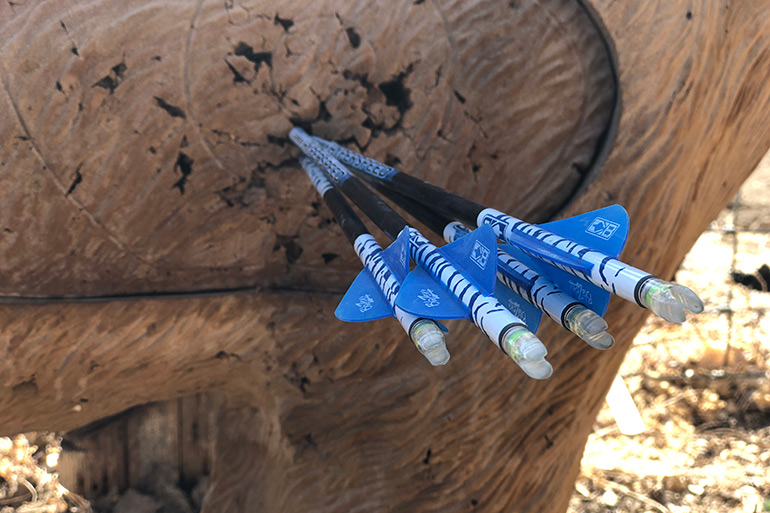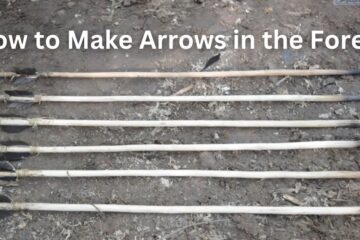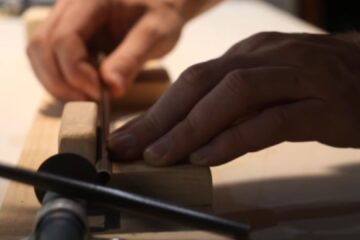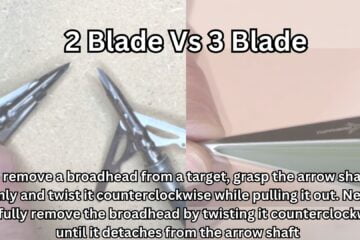Arrow weight heavily impacts the performance and accuracy of archery shots. The heavier the arrow, the slower the speed and the greater the drop trajectory, potentially leading to inconsistent shots and lower accuracy.
As a result, choosing the right arrow weight for your particular archery setup is essential. This decision depends on various factors, including the draw weight of your bow, arrow length, intended use, and personal preference. Additionally, the impact of arrow weight on performance and accuracy can be influenced by other factors, such as the type of arrowhead and the fletching used.
Nevertheless, understanding the effects of arrow weight is crucial for any archer aiming for consistent and accurate shots.

Credit: www.amazon.com
The Science Behind Arrow Weight And Its Importance For Archery
Archery is a sport that requires a high level of precision and accuracy. To achieve this, factors such as the bow, arrow, and archer’s form and technique play a critical role in determining the outcome of a shot. Among these factors, arrow weight is an essential component that can significantly influence an archer’s performance and accuracy.
In this blog post, we will explore the science behind arrow weight and its importance for archery, focusing on the role of arrow weight on balancing and stability during shooting, how heavier arrows can provide better penetration and kinetic energy, and the impact of arrow weight on speed and momentum.
The Role Of Arrow Weight On Balancing And Stability During Shooting
An arrow’s weight plays a crucial role in how it performs during a shot. The weight of the arrow determines how it oscillates as it travels through the air, affecting its spin rate and stability. An arrow that is too light can quickly become unstable and fall off course, resulting in poor accuracy.
On the other hand, an arrow that is too heavy can be challenging to stabilize, leading to inconsistencies in arrow flight.
Bullet points:
- Heavier arrows are more stable in flight, resulting in increased accuracy.
- Lighter arrows are more susceptible to wind drift, making it challenging to shoot accurately in windy conditions.
- Balancing the arrow’s weight with the bow’s draw weight is crucial for consistent arrow flight and accuracy.
How Heavier Arrows Can Provide Better Penetration And Kinetic Energy
The weight of an arrow can significantly influence its ability to penetrate a target. A heavier arrow can transfer more kinetic energy to the target, providing deeper penetration and higher knockdown power. This is because a heavy arrow retains more of its speed and momentum even at longer distances, resulting in a higher impact force on the target.
Bullet points:
- Heavier arrows can penetrate deeper and deliver knockdown power.
- Lightweight arrows may not have enough kinetic energy to penetrate through denser materials, such as animal hides or bones.
- A well-balanced, heavier arrow can provide a balance between penetration and accuracy.
The Impact Of Arrow Weight On Speed And Momentum
Arrow weight can have a significant impact on the speed of the arrow and its momentum. A heavier arrow requires more energy to move, resulting in reduced speed. However, a heavier arrow also retains more of its momentum, resulting in a flatter trajectory and better accuracy at longer distances.
Bullet points:
- Lighter arrows travel faster, but heavier arrows retain more momentum.
- A heavier arrow can deliver maximum kinetic energy, resulting in higher knockdown power.
- Finding the right balance between arrow weight, speed, and momentum is crucial for achieving consistent accuracy and performance.
Arrow weight is a crucial factor in determining an archer’s performance and accuracy. A well-balanced arrow that provides stability, penetration, and speed can significantly enhance an archer’s ability to deliver accurate shots consistently. By understanding the science behind arrow weight, archers can optimize their equipment and technique and achieve their full potential in the sport.
The Relationship Between Arrow Weight And Accuracy: What Do The Experts Say?
The Impact Of Arrow Weight On Performance And Accuracy
When it comes to archery, precision and accuracy are of utmost importance. One of the key factors that can impact an archer’s accuracy and performance is the weight of the arrow they are using. In this section, we will explore the relationship between arrow weight and accuracy and what the experts say about it.
How Arrow Weight Can Affect Your Accuracy
The weight of your arrow can have a significant impact on your accuracy. Here are some of the ways in which arrow weight can impact your accuracy:
- Heavier arrows tend to be more stable in flight, which can lead to better accuracy
- Lighter arrows usually fly faster, but are more susceptible to wind and other external factors, which can make them less accurate
- The weight of your arrow can also affect the trajectory of the arrow and how it reacts to gravity, which can affect accuracy at longer distances
Comparing Arrow Weight Configurations: Pros And Cons
To find the ideal arrow weight for your setup, you need to consider various configurations and their pros and cons. Here’s a comparison of some common arrow weight configurations:
- Heavy arrows: These arrows are more stable in flight, which can lead to better accuracy. However, they may fly slower than lighter arrows and require more effort to shoot.
- Light arrows: These arrows fly faster and require less effort to shoot, but they may be less stable in flight and more susceptible to wind and other external factors.
- Mid-weight arrows: These arrows offer a balance between speed and stability and can be a good choice for many archers. However, finding the ideal weight for your setup may require some trial and error.
Factors Influencing Ideal Arrow Weight For Accuracy
The ideal arrow weight for your setup will depend on various factors, including:
- Your draw weight and draw length
- The type of bow you are using
- The arrowhead weight
- The intended use of the arrow (hunting, target shooting, etc.)
It’s important to experiment with different arrow weights to find the ideal weight for your setup. Keep in mind that the arrow weight that works best for one archer may not work well for another.
Understanding how arrow weight affects accuracy is key to becoming a better archer. By experimenting with different arrow weights and configurations, you can find the ideal weight for your setup and improve your accuracy and performance.
Making The Right Choice: Choosing Arrow Weight Based On Your Needs
Understanding Your Shooting Style And Preferences
When it comes to archery, understanding your shooting style and preferences is important for selecting the right arrow weight. Here are some key things to consider:
- Determine whether you are a beginner or an experienced archer. The weight that you choose should be adjusted based on your level. A beginner archer should choose lighter arrows because they can be more flexible and easier to control. Experienced archers who have developed their muscle memory and shooting form can use heavier arrows that will give them more precise shots.
- Consider your draw length. The longer your draw length, the heavier your arrow should be to get the maximum efficiency out of your shot. Conversely, shorter draw lengths require lighter arrows.
- Decide whether you prefer a faster or slower shot. Lighter arrows will travel faster but heavier arrows will be more accurate. This is because their weight can stabilize the arrow in-flight, resulting in a more precise shot.
Identifying The Target Distance, Size, And Positioning
The type of arrow weight that you choose should also be based on the target distance, size, and positioning:
- Consider the distance between you and the target. Longer distances require heavier arrows, which can travel further and have more penetration power. Shorter distances allow you to use lighter arrows since you don’t need as much velocity to reach the target.
- Determine the size of the target. A smaller target requires more accuracy, which heavier arrows can provide. But larger targets don’t require as much accuracy and lighter arrows can be used.
- Take into account the positioning of the target. A target that is positioned horizontally, like a bullseye, requires a different arrow weight than vertical targets like 3d animal targets. This is because horizontal targets require a flatter trajectory.
Choosing The Right Arrow Weight For Your Bow Specification
Lastly, selecting the right arrow weight based on your bow specification is also crucial in maximizing your performance and accuracy:
- Check your bow’s draw weight. Your arrow weight should match the draw weight of your bow. A heavier draw weight requires a heavier arrow while a lighter draw weight needs a lighter arrow.
- Consider your bow’s speed rating. Lighter arrows will increase the speed rating of your bow, while heavier arrows will decrease it.
- Think about the material of your bow. Traditional bows require heavier arrows while modern compound bows work better with lighter arrows.
By keeping these factors in mind and doing a bit of experimentation with different arrow weights, you can find the perfect match for your archery needs, whether you’re looking for speed, accuracy or a balance between the two.
The Impact Of Arrow Weight On Hunting: How To Optimize Your Success Rate
The impact of arrow weight on hunting: how to optimize your success rate
When it comes to hunting, it’s crucial to have the right equipment. One of the most important aspects of hunting is choosing the right arrow weight. Arrow weight can significantly affect your hunting performance and accuracy, and can ultimately determine your success rate.
We’ll explain how arrow weight can impact your success rate, and provide practical suggestions for choosing the right arrow weight for different hunting scenarios.
Choosing The Right Arrow Weight For Hunting Scenarios
When selecting the arrow weight for a hunting situation, there are several factors to consider. These include:
- Game size: The weight of the arrow should correspond with the size of the game you’re hunting. Larger game requires a heavier arrow to achieve maximum kinetic energy and penetration.
- Velocity: A lighter arrow can achieve greater speed, which is important for long-range shots. Heavier arrows, on the other hand, are slower but offer better accuracy at shorter distances.
- Shooting distance: For longer distances, a lighter arrow may be necessary to maintain velocity and trajectory. Closer distances may require a heavier arrow to achieve maximum penetration.
How Arrow Weight Can Impact Your Success Rate
Choosing the correct arrow weight is critical for hunting success. Using an arrow that’s too light or too heavy can result in reduced accuracy, limited penetration, and ultimately, a wounded animal. Here are some ways arrow weight can impact your success rate:
- Accuracy: Arrow weight can significantly affect accuracy. A lighter arrow may be more difficult to stabilize, resulting in reduced accuracy. A heavier arrow may be more stable, resulting in improved accuracy.
- Kinetic energy: Kinetic energy is the energy transferred from the arrow to the target upon impact. A heavier arrow typically produces more kinetic energy, resulting in increased penetration and a higher chance of a clean kill.
- Penetration: A heavier arrow generally offers greater penetration than a lighter one. This is especially important when hunting larger game that requires deeper penetration to reach vital organs.
Practical Suggestions For Choosing The Right Arrow Weight For Hunting
To choose the right arrow weight for hunting, consider the following practical suggestions:
- Identify the game you’ll be hunting, and select an arrow weight that corresponds with the animal’s size.
- Determine your shooting distance, and select an arrow weight that will maintain velocity and trajectory at that distance.
- Consider your personal preferences and shooting style. Experiment with different arrow weights to see which works best for you.
- Consult with a hunting expert or your local hunting regulations to determine any specific arrow weight requirements.
Choosing the right arrow weight for hunting is crucial for optimal performance and accuracy. By considering several important factors, you can select the best arrow weight for your specific hunting scenario, ultimately increasing your chances of success.
Arrow Weight And Compound Bows: How To Find The Perfect Balance
Arrow weight and compound bows: how to find the perfect balance
When it comes to archery, the type of arrow and bow you choose can greatly affect your performance and accuracy. Arrow weight, in particular, plays a significant role in optimizing your setup. In this post, we’ll discuss how to balance arrow weight with your compound bow to achieve maximum results.
Setting Up Your Compound Bow For Arrow Weight Optimization
Before we dive into the specifics of arrow weight, it’s essential to set up your compound bow correctly. Proper adjustment of your bow will allow you to achieve the best results possible, regardless of your arrow’s weight. Here are the key factors to consider when setting up your compound bow:
- Draw length adjustment: Ensure your bow’s draw length is suitable for your body size and strength. A longer draw will require a heavier arrow to maintain optimum trajectory.
- Arrow rest adjustment: Adjust the arrow rest to ensure that your arrow is well-supported, and the fletching does not make contact with any other component of the bow while releasing the arrow.
- Bow weight adjustment: Set the bow’s weight to a level that is comfortable for you to hold and shoot for an extended period.
The Impact Of Arrow Weight On Let-Off And Holding Weight
Arrow weight has a considerable impact on let-off, which is the amount of weight reduction that occurs when you hold the bow at full draw. The weight reduction allows you to aim and hold your aim steady for a more extended period, enhancing your accuracy.
Choosing the right arrow weight is essential to optimize this effect. Here are the main points to consider:
- Lighter arrows provide less let-off and more holding weight, which results in less stability.
- Heavier arrows provide more let-off and less holding weight, which results in more stability.
- Adjusting the arrow weight can alter the pull weight, which can affect performance.
Balancing Arrow Weight With Arrow Shaft Material, Spine, And Other Variables
Besides arrow weight, other factors affect the arrow’s trajectory and stability. Here are some of the essential variables to consider when balancing arrow weight with your compound bow:
- Arrow shaft material: The shaft material can affect the arrow’s overall weight and stiffness. Carbon arrows are lightweight and have high stiffness, while aluminum arrows offer reduced stiffness and weight.
- Arrow spine: Arrow spine refers to how much the arrow flexes while in flight. Select an arrow with the appropriate spine rating for your draw weight and arrow length.
- Broadhead weight: Broadheads are the tips of the arrow that contribute to the arrow’s weight and stability. Heavier broadheads will require a lighter arrow for balance, while lighter broadheads will require a heavier arrow.
Finding the perfect arrow weight for your compound bow should not be a guessing game. It is essential to consider all variable factors on your bow and your body size before choosing the most suitable arrow for maximum performance. Following the steps outlined above can help you achieve the perfect balance for optimal accuracy and performance.
Frequently Asked Questions Of The Impact Of Arrow Weight On Performance And Accuracy
What Is Arrow Weight And How Does It Affect Performance?
Arrow weight refers to the amount of weight carried by an arrow. It affects performance by influencing arrow speed, trajectory, penetration, and accuracy. A heavier arrow will move slower but will provide greater kinetic energy for deep penetration while a lighter arrow will move faster but will have less kinetic energy.
What Is The Ideal Arrow Weight For Hunting?
The ideal arrow weight for hunting varies depending on the animal being hunted, draw weight, arrow length, and other factors. However, most hunters prefer arrows weighing between 400 and 500 grains for big game hunting. This weight provides the right balance between penetration, kinetic energy, trajectory, and accuracy.
How Does Arrow Weight Affect Arrow Trajectory?
Arrow weight affects arrow trajectory in several ways. A heavier arrow tends to drop more quickly, making it more difficult to shoot at longer distances. However, a heavier arrow can also provide better arrow stability and accuracy at shorter distances.
A lighter arrow, on the other hand, will have a flatter trajectory and less drop over longer distances.
Does Arrow Weight Affect Accuracy?
Yes, arrow weight affects accuracy. A heavier arrow tends to be more accurate because it is less susceptible to wind drift and other external factors that can affect arrow trajectory. Also, a heavier arrow provides more stability upon release which contributes to better accuracy.
How Does Arrow Weight Affect Bow Performance?
Arrow weight affects bow performance by influencing the amount of energy required to shoot an arrow. A heavier arrow requires more energy to shoot, which may cause the bow to perform differently. Generally, it’s recommended to use the arrow weight that matches the bow’s recommended specifications to ensure optimal performance.
Conclusion
To sum it up, the arrow weight plays a prime role in determining the accuracy and velocity of an arrow. As we have discussed earlier, heavier arrows are more stable and retain their momentum for longer distances while the lighter arrows gain speed and can travel faster.
In both cases, the overall impact of arrow weight is significant on accuracy, precision, and grouping. Therefore, it is crucial to choose compatible arrows for different applications, be it hunting, target shooting, or competition. The arrow weight is not the only factor one should consider while selecting an arrow, but certainly, it is a crucial one.
Understanding the impact of arrow weight and its relevance to your shooting goals can go a long way in improving your overall performance and accuracy. Happy shooting!






